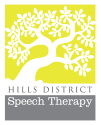Normal speech and language development
- Responds to voice and sound
- Coos (oo, ahh…)
- Smiles
- Different crying sounds to represent needs
- Responds to ‘no’ and their name
- Uses some appropriate gestures such as waving ‘bye bye’
- Babbles (e.g. baa, muu, dee)
- More complex babbles (e.g. ‘ma ma bee bee’)
- Copies gestures and sounds (e.g. claps ‘woof woof’)
- Starts to use nonsense words to label important things in their world
- First words may emerge
- Points and pulls towards items to get attention
- Begins to use a variety of single words such as:
- More, no, yes, ball, go, juice
- Continues to talk using ‘nonsense’ words
- Begins to put two words together in various combinations such as:
- ‘Big drink’
- ‘Drink milk’
- ‘My drink’
- By two years of age your child should consistently be using 50 words independently
- Understands simple questions and instructions
- A huge explosion of language occurs during this time. Vocabulary expands from around 50 words at two years of age to 1200 words by three years
- Short sentences will start to form and some grammatical features will begin to develop e.g. ‘ride bike’ may change to ‘riding bike’
- Begins to understand simple two part instructions, most common words and routine based activities
- From 3-4 years many more grammatical structures begin to appear in sentences
- The meanings of most sentences are clear
- Some common grammatical features are:
- use of past tense (e.g. talked)
- use of articles such as ‘a’ and ‘the’ (e.g. The ball is red)
- use of pronouns such as ‘he’, ‘she’ and ‘they’ (e.g. He is running)
- This is the time where children will ask lots of questions and can answer ‘who’, ‘what’ and ‘where’ questions such as: “what does a fireman do?”
- Following more complex instructions should not be too difficult (e.g. “put your shoes under the bed and then grab your blue bag”)
- By now speech and language should be resembling adult forms;
- Sentences should be mostly grammatically correct
- They can answer all wh- questions
- They should have a large vocabulary to express various ideas, wants and needs
- They can recount past experiences and hold a conversation
What if my child speaks more than one language?
It’s not a disadvantage to speak more than one language! There are normal differences that must be accounted for. If you are concerned, consult a speech therapist who can provide information about those normal differences and help determine the need for intervention.
Literacy development
- Can rhyme and clap syllables
- Can blend together words with 3 sounds (e.g. d-i-g → dig)
- Can read and spell most single sounds (e.g. m, b, t, a)
- Can read and spell ALL single sounds quickly (1 sound/second)
- Starting to learn and recognise digraphs (e.g. th, sh, ee)
- Can blend together words with 4 sounds (e.g. b-r-i-ck → brick)
- Can segment words with 4 sounds (e.g. what are the sounds in ‘spot’?)
- Can read simple text with fluency and attempt to write simple sentences (e.g. My black dog ate a frog)
- Will attempt to write unknown words phonetically (e.g. cheese as ‘cheaz’)
- Reading continues to increase in fluency and accuracy and they should be reading for pleasure outside of school (e.g. early chapter books)
- They will making more accurate sound and letter choices for spelling
- Writing a page of text in one go, is easily achieved
